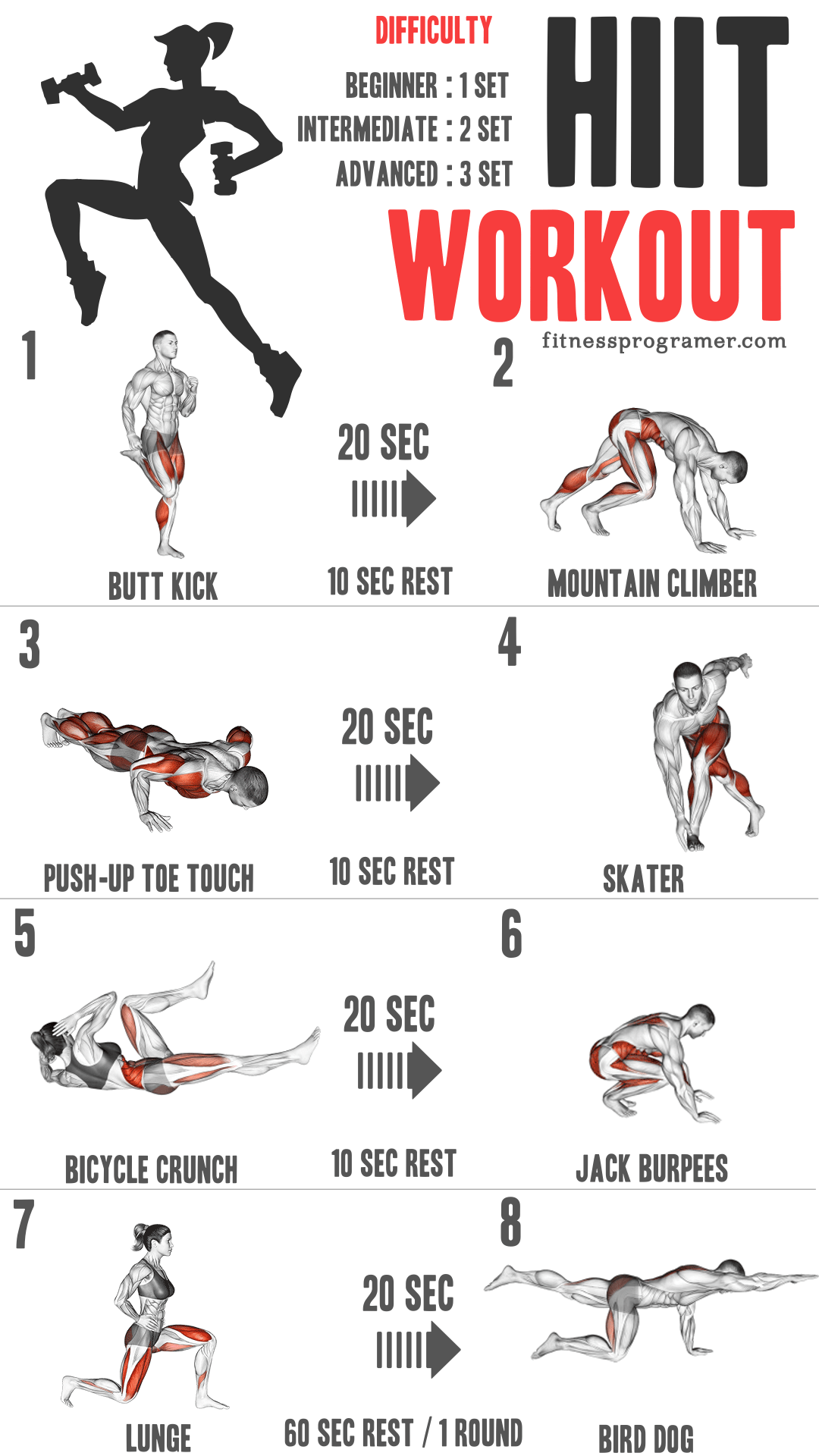Rise by Six: Your Daily Dose of Inspiration
Explore insights and stories that elevate your day.
HIIT and Run: Why Short Workouts Rule the Fitness World
Unlock the secret to fitness success with HIIT and running! Discover why short workouts are taking the fitness world by storm.
The Science Behind HIIT: How Short Workouts Maximize Your Fitness Gains
High-Intensity Interval Training, or HIIT, has gained significant popularity in recent years due to its effectiveness in maximizing fitness gains in a shorter amount of time. This training technique involves alternating between intense bursts of exercise and short recovery periods. Research shows that HIIT can enhance cardiovascular health, boost metabolism, and improve overall fitness levels more efficiently than traditional steady-state cardio. The beauty of HIIT lies in its ability to engage multiple muscle groups and increase heart rate, which promotes fat burning and muscle building in a condensed timeframe.
One of the key components of HIIT is its impact on the body's physiology. During a HIIT session, the body experiences an 'afterburn' effect, known as excess post-exercise oxygen consumption (EPOC). This phenomenon leads to continued calorie burning even after the workout is over, making HIIT a time-efficient method for those looking to shed pounds. Additionally, the flexibility of HIIT allows individuals to tailor their workouts to fit their fitness level and goals, whether through cycle sprints, bodyweight exercises, or strength training intervals.

Running vs. HIIT: Which Short Workout is Best for Your Goals?
When it comes to short workouts, both Running and HIIT (High-Intensity Interval Training) have their unique benefits, making them appealing based on individual fitness goals. For those focusing on endurance and cardiovascular health, regular running sessions, even at a brisk pace, can improve overall stamina and lung capacity. Additionally, running is a straightforward activity that requires minimal equipment—just a good pair of shoes and a safe path. On the other hand, HIIT workouts often combine cardio and strength elements, leading to higher calorie burn in a shorter period. This makes HIIT particularly effective for fat loss and muscle retention, especially for those with time constraints.
Ultimately, the choice between Running and HIIT should be guided by your fitness objectives. If your goal is to build endurance or enjoy a meditative exercise experience, sticking with traditional running routes might be beneficial. However, if you're looking to maximize calorie burn in less time or build strength alongside your aerobic fitness, incorporating HIIT sessions into your routine could be more advantageous. Consider experimenting with both formats to discover what resonates best with you, as diverse workouts can keep your regimen enjoyable and effective.
Unlock Your Potential: Tips for Getting Started with HIIT and Running
High-Intensity Interval Training (HIIT) and running offer powerful benefits for fitness enthusiasts looking to unlock their potential. To get started, it’s essential to create a structured plan that incorporates both forms of exercise. Begin with a warm-up to prepare your muscles and joints for the workout ahead. Here are some tips to help you kick off your journey:
- Start with shorter HIIT sessions, gradually increasing their intensity.
- Incorporate running into your routine, aiming for at least two sessions per week.
- Listen to your body and allow for adequate recovery to prevent injury.
When you’re ready to ramp up your training, consider blending HIIT with your running. This hybrid approach not only boosts cardiovascular fitness but also enhances your overall performance. Stay motivated by setting achievable goals, tracking your progress, and celebrating small victories. Here are a few more tips to keep you on track:
- Join a local running group or community to connect with like-minded individuals.
- Vary your running routes to keep your workouts interesting.
- Experiment with different HIIT formats, such as bodyweight exercises or sprint intervals.